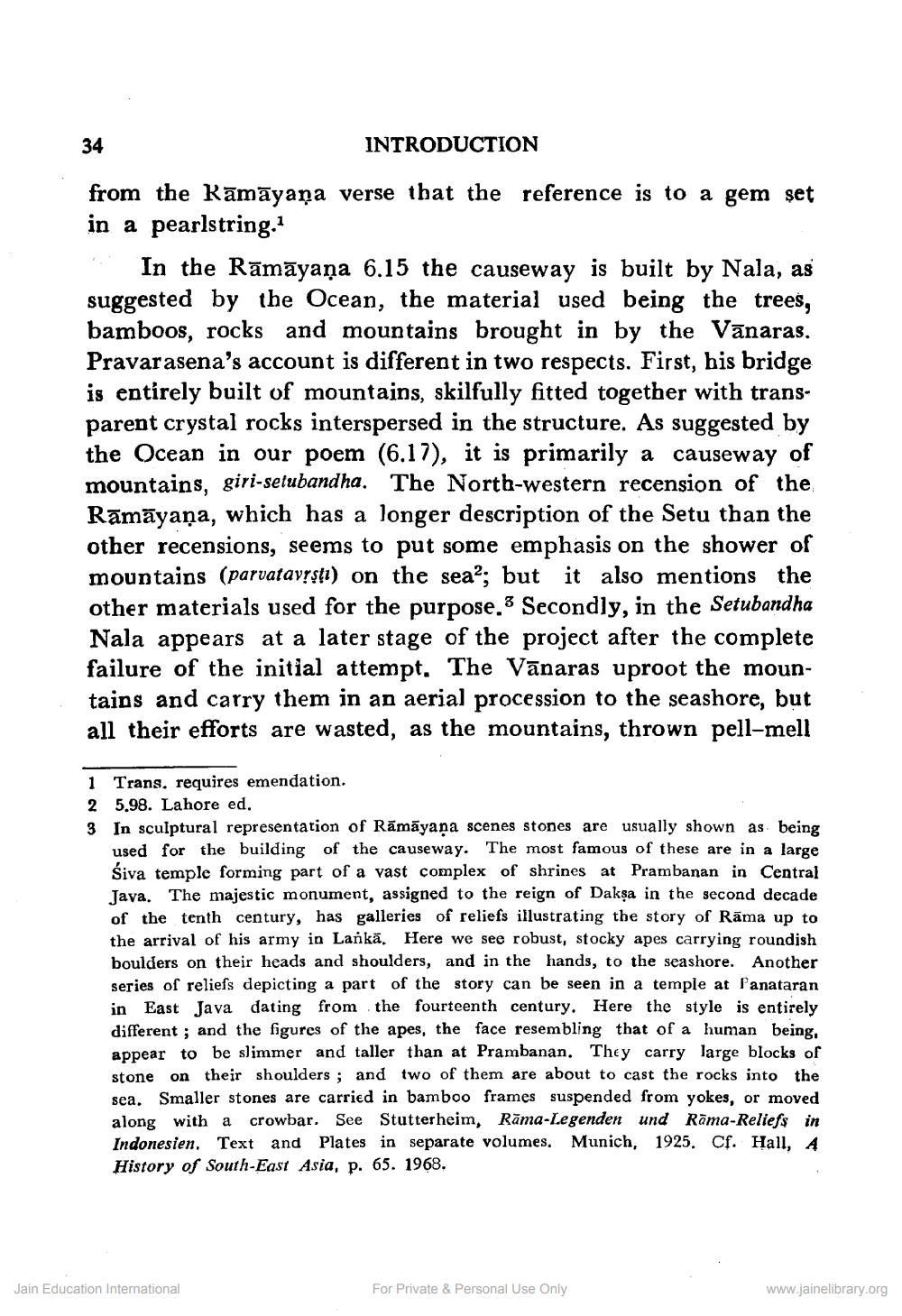________________
34
INTRODUCTION
from the Kāmāyaṇa verse that the reference is to a gem set in a pearlstring.
In the Rāmāyaṇa 6.15 the causeway is built by Nala, as suggested by the Ocean, the material used being the trees, bamboos, rocks and mountains brought in by the Vānaras. Pravarasena's account is different in two respects. First, bis bridge is entirely built of mountains, skilfully fitted together with transparent crystal rocks interspersed in the structure. As suggested by the Ocean in our poem (6.17), it is primarily a causeway of mountains, giri-selubandha. The North-western recension of the Rāmāyaṇa, which has a longer description of the Setu than the other recensions, seems to put some emphasis on the shower of mountains (parvatavršļi) on the sea?; but it also mentions the other materials used for the purpose. Secondly, in the Setubandha Nala appears at a later stage of the project after the complete failure of the initial attempt. The Vānaras uproot the mountains and carry them in an aerial procession to the seashore, but all their efforts are wasted, as the mountains, thrown pell-mell
1 Trans, requires emendation. 2 5.98. Lahore ed. 3 In sculptural representation of Rāmāyaṇa scenes stones are usually shown as being
used for the building of the causeway. The most famous of these are in a large Siva temple forming part of a vast complex of shrines at Prambanan in Central Java. The majestic monument, assigned to the reign of Daksa in the second decade of the tenth century, has galleries of reliefs illustrating the story of Rāma up to the arrival of his army in Lankā. Here we see robust, stocky apes carrying roundish boulders on their heads and shoulders, and in the hands, to the seashore. Another series of reliefs depicting a part of the story can be seen in a temple at Panataran in East Java dating from the fourteenth century. Here the style is entirely different ; and the figures of the apes, the face resembling that of a human being. appear to be slimmer and taller than at Prambanan. They carry large blocks of stone on their shoulders ; and two of them are about to cast the rocks into the sea. Smaller stones are carried in bamboo frames suspended from yokes, or moved along with a crowbar. See Stutterheim, Rāma-Legenden und Rāma-Reliefs in Indonesien. Text and Plates in separate volumes. Munich, 1925. Cf. Hall, A History of South-East Asia, p. 65. 1968.
Jain Education International
For Private & Personal Use Only
www.jainelibrary.org




